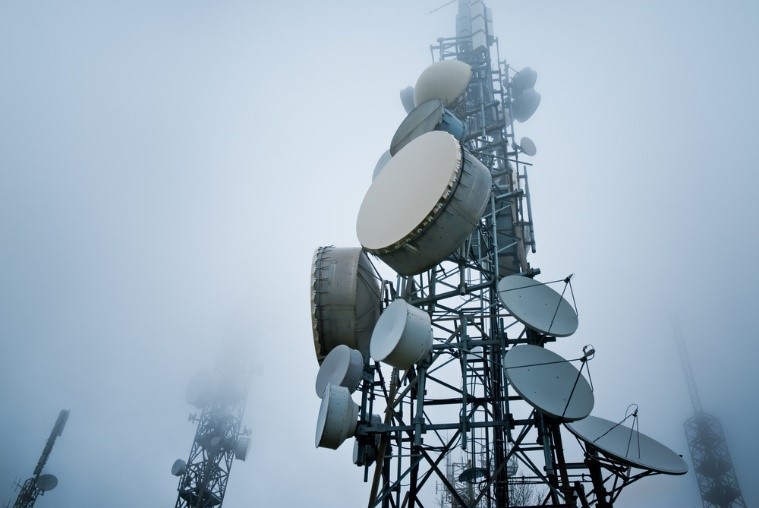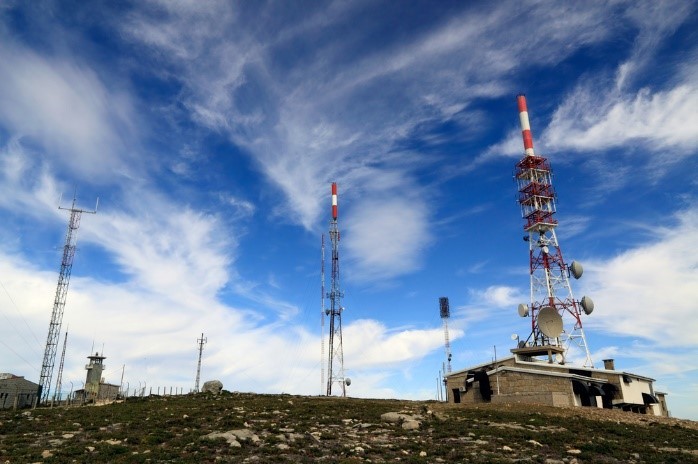Out of range: anomalous communication areas

You quickly get used to the good. Communication is available at home, in the car, in the subway. It is enough not only for calls: you can easily afford to watch streaming video from the Internet. But sometimes the signal suddenly disappears. And not only in the deep forest, where this can be expected, but also in completely unexpected places: at the cottage, at the recreation center, in the home apartment.
We understand why and where cellular communication is lost.
Landscape and weather phenomena

Cellular coverage has borders - humanity has not yet provided every square kilometer of the planet with mobile communications. The first step is to look at the coverage map of your operator. Such maps are not built manually, but using algorithms that take into account the distribution of the BS, their height above ground level, the directivity of the antennas and a number of other factors. Therefore, the situation “on the spot” may differ from the expected one, and first of all this refers to the zones of “possible coverage”. For example, in mountainous areas, coverage will inevitably be inhomogeneous due to the relief features. In the flat territory everything is simpler, but there are some nuances here too.
')
In cities, the most common cause of deterioration or loss of a cellular signal is complex construction. Operators try to place base stations (BS) so that the coverage is as smooth as possible, but numerous buildings still often create areas of uncertain reception. Even the installation of femtocells does not always save. Even radio waves of cellular communication "do not like" reinforced concrete buildings with a large number of valves in supporting structures.
If the signal unexpectedly disappeared, it may be due to a problem with the nearest BS. For example, the station is out of order, disconnected for the period of repair, the antennas are damaged by a fallen tree, or the pole with the BS has fallen.
Winter is coming, and long-lasting heavy snowfall is another reason for the disruption of cellular communications. They can damage the power lines that power the base stations. In addition, any heavy precipitation absorbs and scatters radio waves. This is especially noticeable in the 2 GHz and more bands, which is associated with the frequency of resonant absorption of water at the level of 2450 MHz. Therefore, depending on the season, the signal level in the same place will be different. True, this is true only for satellite communication systems. In reality, a linear relationship between the absorption coefficient in the atmosphere and the intensity of rain exists only for the whole range of centimeter and millimeter waves. The decimetric radio waves experience little or no molecular absorption in rain and snow. Heavy rain weakens wi-fi signals of the 2.4 GHz band with an intensity of up to 0.05 dB / km, dense fog introduces a weakening of 0.02 dB / km, and forest (thick foliage, branches) - up to 0.5 dB / meter. In the 5.6 GHz band, the attenuation has a value of 0.5 dB / km.
All other things being equal, the signal will be better near water than on land (there are no natural obstacles). However, there are some difficulties. Due to the numerous reflections from the water surface, it is possible to enter the Fresnel zones, which affect the signal in different ways. The Fresnel zones are the maxima and minima of a radio signal alternating in space at the point of its reception, which arise due to the interference of the radio signal.

The reflected signal is always present and much weaker than the main one, but it cannot be neglected. The paths along which the signals travel are different from each other, and because of this, the signals will arrive at the receiving point with different phases. If their phases differ by a certain value, the signals mutually weaken each other. There are cases when, depending on the location of the transmitting antenna and the terrain parameters, the interference caused the signal to differ by tens of dB.
As noted in this article, the radius of the Fresnel zone for the radio path or the minimum clearance to an obstacle is calculated by the formula: h = ² √ [1/3 * D * λ * X / D * (1 - X / D)], where h is the value “Clearance”, D is the path length, λ is the length of the working radio wave, X is the distance to the obstacle point. It is possible to consider hands, and with the help of special calculators, calculate the radius of the Fresnel zone in its widest part, the radius of coverage and the required tilt of the antenna of the base station.
Whims of the luminaries

Flashes on the Sun also affect communication: Perturbations of the Earth’s magnetosphere, arising from the interaction of charged particles carrying the sun from the planet’s magnetic field, can cause a failure.
At Bell Labs, it was considered that about three weeks a year (in total) the Sun is so active that it can interfere with the work of communication equipment. The outbreaks affect the shortwave range, as well as communication satellites, causing interruptions in telephone networks, transmission of television and radio signals.
The sun also affects the energy supply systems, on which, without exaggeration, everything depends. When the Earth reaches the emission products of the Sun, it provokes the appearance of induced currents in power lines and between the ground loops of transformers. As a result, overloading and rolling out of power systems are possible. Fortunately, powerful solar storms occur infrequently.
In 1859, the Solar Superstorm (the most powerful geomagnetic storm in the entire history of observations) caused a failure of telegraph systems around the world. Northern Lights were observed everywhere, even over the Caribbean. Above the Rocky Mountains, the glow was so bright that the glow woke the miners . According to the results of the study of ice samples taken in Antarctica, storms of similar intensity repeat on average once every 500 years.
Less powerful storms, still capable of affecting communication systems, occur much more frequently: they occurred in 1921, 1960 and 1989, when there were massive radio communication failures. In 1989, a small solar storm paralyzed electrical networks in the Canadian province of Quebec.
Even if the power of the base stations is turned off, they still work for several hours from the built-in batteries. Often this is enough to restore power supply.
Guarding the Motherland
Everyone knows the problem with 3G and 4G in the Moscow region. Five years ago, the coverage area of all major operators in the Moscow region looked as follows ( source ):

In the center of this “desert” territory was the command station of the EWS (satellite system of the missile attack warning system). For a long time, the presence of a military strategic facility in the area has hampered communications operators. As a result, it was possible to agree on a band of frequencies allowed for use, but in Russia there are still many other military units, strategic facilities, secret command posts, military airports and other places near which a smartphone can take it very badly.
Man-made interference

Sometimes the connection may disappear or deteriorate badly on a “level ground”. The reason are objects with their own electromagnetic field of high intensity. For example, power lines. Not just because SanPiN regulate the zones along the power lines, within which residential construction is prohibited. The power and size of the electromagnetic fields in this area are such that in houses standing on the border of the allowable zone, even disconnected wiring can be sensitively hit with a current when touched.
In any case, if there is something wrong with the “something wrong” connection, you should first ask the communication operator with a question. Most often, technical specialists already know the reason, and if not, they “get to the bottom of it”.
We wish you all communication without fail!
Source: https://habr.com/ru/post/314256/
All Articles